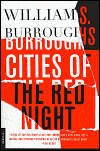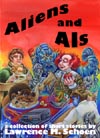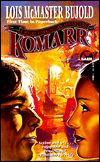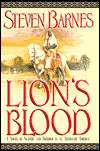
Cities of the Red Night, by William S. Burroughs
Book Review by James Michael White
Have you read this book?
The temptingly easiest way to describe William S. Burroughs' Cities of the Red Night is as a homosexual opus of the apocalypse, but then that would probably put off a lot of readers because the sexually charged nature of the work, though a necessary component of its mythic architecture, isn't really the point.
Nor is the point, really, how its three primary stories intermingle with the ever-present back story, the one from which the book gets its title and driving engine.
No, the point here is that mankind is doomed by its desires, no matter how vain or valiant those desires may be, a theme echoed in the three primary stories and the underlying, perhaps even deeper, one. And to be sure, it's theme that Burroughs is selling here above everything else, the subordinate instruments of its evocation being those stories and the characters who populate them.
And just what are those stories? Well, there's a pirate one set during the 1700s in which said pirates attempt to establish the first egalitarian society, ever, while at the same time attempting to overthrow their matriarchal oppressor, mother Spain; then there's the story of Clem Snide, a globe-trotting private detective, circa 1970s, who happens to be both psychic and retained to find a missing person who may have vanished as part of a magical ritual; then there's a story of time-traveling space-farers warring against matriarchal deceivers in the midst of a radioactive plague that may or may not have been designed to destroy the white race, or, in another time, Spaniards (a resonance here with the aforementioned pirates and their goal).
Beneath it all, though, roils the back story concerning the Cities of the Red Night where, ages ago, a meteor -- or, according to some, a black hole -- thumped into the earth near six ancient cities, ones where civilization and magical technology were highly advanced, this event causing all kinds of mutations of the biological and time-like kind.
Thus, then, the skipping about from pirate story to detective story to space-faring story to even an old west setting, the point of which is to demonstrate the utter interchangeability of human events in the course of history, of even the humans themselves (and a few aliens) who are involved. Each character and event has its analogue in another time and place so that we are given to understand that every place is the same place, every person the same as some other person, the great drives of mankind always the same throughout any age, and always destructive, often in ways unforeseen.
And what are those great drives? They appear to be the drives to oppress and to throw off oppression, which then generates a quest on both sides to achieve better means with which to do so, which furthermore leads to the creation of better and better weapons. Including, perhaps, a radioactive plague hop-scotching through time. Here, the oppression is envisioned by the desire of state entities to subjugate and hang its dissenters (a recurrent mode of death that bedevils pirates, sympathizers, and possesses magical efficaciousness, as well, by most reliably eliciting the transmigration of souls), while freedom is envisioned as sexual and necessarily life-giving, even in the midst of state-sanctioned execution by hanging.
Yet here again we see echoes of the unforeseen. The life-giving sexuality is of an unusual kind, not merely sterile by its (mostly) homosexual nature, but perverted by magic to assure the same kind of vicious cycle as that exhibited by the human drives for oppression and freedom -- this cycle resulting both in death and life via the aforementioned transmigration. The plague, too, assures one kind of destruction, death, while at the same time assuring its own perpetuation, life, by transmigration once more.
In this bleak-seeming and absurdly contradictory narrative landscape, though, Burroughs conjures some startling imagery (not merely perverse), and asks Big Questions. For instance:
"The fashionable thing is to look for the answers or the questions behind sex and death."
Which later finds an answer as such:
"Audrey ... knew the reason for suffering, fear, sex, and death. It was all intended to keep human slaves imprisoned in physical bodies while a monstrous matador waved his cloth in the sky, a sword ready for the kill."
Once again, analogues to other things run rampant (not merely to Gnosticism and Schopenhauer). Audrey also happens to be Clem, while the monstrous matador is both plague, oppressor state, and multifarious forms of villainy. But in a bit of narrative transcendence, we might also see that Audrey is William S. Burroughs himself, thereby reinforcing one of the motifs of the novel, that of interchangeability, and reinforcing it in a startling way. Burroughs' point is less that he's writing a story and more that he's castigating the dual natures of all men, even himself, even the reader. In this fashion he reaches out of the pages and slaps us silly with a "See here, now!" That's quite a trick, and a good one, too, but all's not well in Cities of the Red Night.
As effective as the first two-thirds of the novel are in telling interesting stories which cause readers to draw inexorable conclusions about the central theme, the latter third quite simply lapses into incoherent gibberish, as if those first two-thirds and their stories were matte paintings layered one upon the other, each of their correlations visible to the reader ... yet existing only to get smashed up at the end, the bits fragmentary, the pieces jumbled.
The final chapter comes close to redeeming the gibberish by providing a narrative bookend, placing us in a familiar-seeming time and place hearkening to earlier moments in the novel, but a whole lot of readers will probably abandon the book well before then.
If you like wild experimentation and literary puzzles that almost work, Cities of the Red Night will play polo with your brain. Those seeking traditional narratives and easy answers will be happier elsewhere.
Nor is the point, really, how its three primary stories intermingle with the ever-present back story, the one from which the book gets its title and driving engine.
No, the point here is that mankind is doomed by its desires, no matter how vain or valiant those desires may be, a theme echoed in the three primary stories and the underlying, perhaps even deeper, one. And to be sure, it's theme that Burroughs is selling here above everything else, the subordinate instruments of its evocation being those stories and the characters who populate them.
And just what are those stories? Well, there's a pirate one set during the 1700s in which said pirates attempt to establish the first egalitarian society, ever, while at the same time attempting to overthrow their matriarchal oppressor, mother Spain; then there's the story of Clem Snide, a globe-trotting private detective, circa 1970s, who happens to be both psychic and retained to find a missing person who may have vanished as part of a magical ritual; then there's a story of time-traveling space-farers warring against matriarchal deceivers in the midst of a radioactive plague that may or may not have been designed to destroy the white race, or, in another time, Spaniards (a resonance here with the aforementioned pirates and their goal).
Beneath it all, though, roils the back story concerning the Cities of the Red Night where, ages ago, a meteor -- or, according to some, a black hole -- thumped into the earth near six ancient cities, ones where civilization and magical technology were highly advanced, this event causing all kinds of mutations of the biological and time-like kind.
Thus, then, the skipping about from pirate story to detective story to space-faring story to even an old west setting, the point of which is to demonstrate the utter interchangeability of human events in the course of history, of even the humans themselves (and a few aliens) who are involved. Each character and event has its analogue in another time and place so that we are given to understand that every place is the same place, every person the same as some other person, the great drives of mankind always the same throughout any age, and always destructive, often in ways unforeseen.
And what are those great drives? They appear to be the drives to oppress and to throw off oppression, which then generates a quest on both sides to achieve better means with which to do so, which furthermore leads to the creation of better and better weapons. Including, perhaps, a radioactive plague hop-scotching through time. Here, the oppression is envisioned by the desire of state entities to subjugate and hang its dissenters (a recurrent mode of death that bedevils pirates, sympathizers, and possesses magical efficaciousness, as well, by most reliably eliciting the transmigration of souls), while freedom is envisioned as sexual and necessarily life-giving, even in the midst of state-sanctioned execution by hanging.
Yet here again we see echoes of the unforeseen. The life-giving sexuality is of an unusual kind, not merely sterile by its (mostly) homosexual nature, but perverted by magic to assure the same kind of vicious cycle as that exhibited by the human drives for oppression and freedom -- this cycle resulting both in death and life via the aforementioned transmigration. The plague, too, assures one kind of destruction, death, while at the same time assuring its own perpetuation, life, by transmigration once more.
In this bleak-seeming and absurdly contradictory narrative landscape, though, Burroughs conjures some startling imagery (not merely perverse), and asks Big Questions. For instance:
"The fashionable thing is to look for the answers or the questions behind sex and death."
Which later finds an answer as such:
"Audrey ... knew the reason for suffering, fear, sex, and death. It was all intended to keep human slaves imprisoned in physical bodies while a monstrous matador waved his cloth in the sky, a sword ready for the kill."
Once again, analogues to other things run rampant (not merely to Gnosticism and Schopenhauer). Audrey also happens to be Clem, while the monstrous matador is both plague, oppressor state, and multifarious forms of villainy. But in a bit of narrative transcendence, we might also see that Audrey is William S. Burroughs himself, thereby reinforcing one of the motifs of the novel, that of interchangeability, and reinforcing it in a startling way. Burroughs' point is less that he's writing a story and more that he's castigating the dual natures of all men, even himself, even the reader. In this fashion he reaches out of the pages and slaps us silly with a "See here, now!" That's quite a trick, and a good one, too, but all's not well in Cities of the Red Night.
As effective as the first two-thirds of the novel are in telling interesting stories which cause readers to draw inexorable conclusions about the central theme, the latter third quite simply lapses into incoherent gibberish, as if those first two-thirds and their stories were matte paintings layered one upon the other, each of their correlations visible to the reader ... yet existing only to get smashed up at the end, the bits fragmentary, the pieces jumbled.
The final chapter comes close to redeeming the gibberish by providing a narrative bookend, placing us in a familiar-seeming time and place hearkening to earlier moments in the novel, but a whole lot of readers will probably abandon the book well before then.
If you like wild experimentation and literary puzzles that almost work, Cities of the Red Night will play polo with your brain. Those seeking traditional narratives and easy answers will be happier elsewhere.
|
Click here to buy Cities of the Red Night, by William S. Burroughs on Amazon
|
Cities of the Red Night, by William S. Burroughs on Amazon

| More Books You Might Like |
Comment on Cities of the Red Night, by William S. Burroughs




